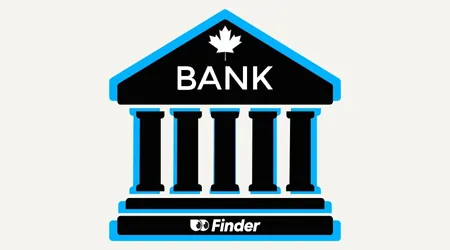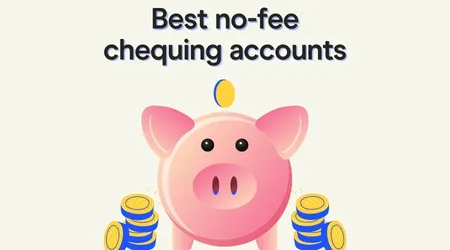Debit cards let you make purchases and ATM withdrawals without having to pay interest. But your merchant or provider can deny the transaction for a number of different reasons. Knowing the possible causes ahead of time will help you avoid seeing the dreaded word – “declined.”
Reason 1: You don’t have enough funds
This is the most common cause of a debit card being declined, and one that you can easily avoid by keeping careful track of your spending money. Unless you have overdraft protection, most banks will not allow you to make a purchase or withdrawal that goes beyond your available balance.
Not having enough funds isn’t uncommon. Almost 3 out of 4 Canadians (73%) spend more than they save, each month, according to survey data from the Finder: Consumer Sentiment Survey Q2 2023.
 Nyble Credit Line
Nyble Credit Line
Nyble Credit Line
Get a credit line with no interest or fees. Pay an optional membership fee to access premium services such as instant funding.How to avoid it:
See if your financial institution offers a mobile app that shows your up-to-date balances and transactions. Check this before making your purchases to ensure you have enough funds.
Compare chequing accounts with overdraft protection
Finder Score for chequing accounts
To make comparing even easier we came up with the Finder Score. Welcome offers, account fees and features across 60+ chequing accounts and 25+ lenders are all weighted and scaled to produce a score out of 10. The higher the score the better the account - simple.
What is a debit card and how does it work?
Reason 2: You’ve entered the wrong PIN
The personal identification number (PIN) you chose must be entered correctly in order for some transactions to be allowed. If you enter that number incorrectly, the transaction will automatically be declined.
How to avoid it:
Memorize your PIN and try not to confuse the cards if you have more than one account with a linked debit card. It’s never suggested that you write the PIN on the card or keep it in your wallet. This will make it easier for a thief to access your account if your wallet or purse is stolen.
Reason 3: You’ve reached your withdrawal limit
To help protect your funds, most financial institutions will have daily withdrawal limits on your accounts. This will often be a combination of ATM and purchases and can prohibit you from getting the cash you need.
How to avoid it:
Be familiar with the daily withdrawal limits on your accounts. If you know you’ll need to exceed them, inform the bank ahead of time. In most cases they will extend the daily limit.
Reason 4: It’s expired
Some debit cards also have expiration dates like credit cards. If yours has expired, it won’t be accepted at ATMs or for purchases.
How to avoid it:
Check the date and know when the debit card is due to expire. Ask for your replacement card well in advance to avoid losing access to your account. Make sure you destroy the old card, as it does contain personal information you don’t want others to get a hold of.
Reason 5: The information you’ve entered doesn’t match your personal details on record
This is common with online purchases.The merchant takes extra precautions to verify your identity by asking for personal information such as the name on the card and your address. If you have entered anything incorrectly, you won’t be able to make your purchase.
How to avoid it:
Before making a purchase online check that the personal information you entered matches that of the Visa debit card you’re using.
Reason 6: Your bank was suspicious of the transaction
Most banks reserve the right to decline any transaction they deem to be out of character with your normal spending or withdrawal habits. In most cases this can be cleared up at the register with a quick call to the bank, but it still could cause you some embarrassment. Some banks have security features in place and can be a little too safe and block authentic transactions.
How to avoid it:
If you have plans on making a large purchase, notify your bank beforehand to get pre-authorization.
Reason 7: You’ve made an international purchase
Many accounts now offer Visa or Mastercard debit cards, which allow you to use them when traveling overseas. This is a convenient and secure way to make your overseas purchases and ATM withdrawals. Unfortunately, it doesn’t always work the way you intended, and you could find yourself without access to your money if your debit card is declined.
It appears most Canadians rarely consider the accessibility of ATMs when opening a new bank account. According to survey data from CST Q2, only 3% of respondents thought ATM accessibility was an important feature for a new bank account and yet, using an ATM is a key method for getting cash while travelling overseas. To find out more, read our tips on avoiding ATM while overseas.
Compare the best debit cards to use overseas
How to avoid it:
Familiarize yourself with the ATM networks that accept your debit card overseas. Inform the bank before making your trip so they won’t flag your purchases as unusual activity. This should help to make sure your money is available.
Reason 8: Technical issues
While there are many situations where you could be at fault for a declined card, that’s not always the case. Merchants and banks sometimes have issues processing debit transactions, even when you’ve done everything right. It could be due to their Internet connection, too many transactions processed at once, a power failure somewhere along the network or a handful of other reasons.
How to avoid it:
While you can’t avoid having your card declined when it’s the bank’s or merchant’s fault, you can try again. Ask to try another terminal or consider waiting until the system is up and running again.
Reason 9: Your joint account holder deactivated your card
If you’ve opened a joint banking account with your spouse, partner or other family member they’re allowed to deactivate your debit card without permission from you. If this happens, you won’t be able to make purchases or withdrawing cash.
How to avoid it:
With a joint account you can require that both account holders sign for any major changes, including adding or deactivating any debit cards. Also, don’t open a joint bank account with someone you don’t fully trust, and always communicate with each other about any changes being made to the account.
Reason 10: Your debit card has not been activated yet
If you’ve recently gotten a new debit card, it’s possible your card hasn’t been activated yet. Card activation is required by financial institutions as an added layer of protection. For example, if your bank mails your new debit card and someone else intercepts your mail, they won’t be able to use your card because only the card holder can activate it.
How to avoid it:
Call your bank with your debit card and personal details on hand. Usually, you just have to verify your personal information with the bank in order for them to activate the card. You may also be able to activate your debit card through your bank’s online account portal.
Reason 11: The card is not supported by the machine
Some ATMs and debit terminals don’t accept or support certain types of cards. You might encounter this problem especially if you have a debit card issued by a smaller bank or credit union.
How to avoid it:
While you can’t force a machine to accept your card, you can try opening a low-fee chequing account with a well-established bank and use it exclusively for cash withdrawals or debits. You can transfer your money from your preferred financial institution to that new bank account if you want to withdrawal money.
Reason 12: Mechanical issue with the vendor’s machine
Sometimes the vendor might have a faulty debit machine, where the machine is broken or has an unstable connection. If that’s the case, the vendor will likely become aware of the issue after a series of cards (including yours) aren’t recognized by the machine.
How to avoid it:
Call your bank to ensure there is no problem with your card. If your bank confirms your card should function properly in your specific circumstances, then ask the vendor to try a different machine.
Reason 13: Your cards tap capabilities or chip has malfunctioned
It’s possible that the tap mechanism or chip in your card has malfunctioned. That can happen over time and after continuous use.
How to avoid it:
Call your bank to see if they can reactivate your card’s tap or chip functionality over the phone. Otherwise, they’ll likely have to mail you a new card. You may also be able to go into a bank branch and get a new or temporary card on the spot.
Reason 14: Your card is damaged
If your debit card is old, it’s likely acquired some scratches and been bent over the years. A machine may not be able to recognize a bent card when you try to swipe it. Scratches on the chip or magnetic strip can also make it unreadable by the machine.
How to avoid it:
You can call your bank to request they send you a new card, or go into a bank branch and get a new or temporary replacement card immediately.
Compare different chequing accounts
If you’re thinking of switching up you’re chequing account, maybe looking for one with more features – like a larger monthly transaction limit – then check out some chequing account options in the table below.
Finder Score for chequing accounts
To make comparing even easier we came up with the Finder Score. Welcome offers, account fees and features across 60+ chequing accounts and 25+ lenders are all weighted and scaled to produce a score out of 10. The higher the score the better the account - simple.
Who is most likely to be researching debit card declines?
Finder data suggests that men aged 18-24 are most likely to be researching this topic.
Response | Male (%) | Female (%) |
|---|---|---|
| 65+ | 2.69% | 3.89% |
| 55-64 | 4.40% | 3.26% |
| 45-54 | 5.55% | 6.29% |
| 35-44 | 9.66% | 7.09% |
| 25-34 | 14.87% | 12.01% |
| 18-24 | 17.44% | 12.86% |
Declined debit cards FAQs
More banking guides from our experts

Banking statistics and trends in Canada for 2025
Explore key banking statistics and figures from the Finder: Consumer Sentiment Survey January 2025.
Read more…
Best free (no-fee) chequing accounts in Canada
Compare the features of 8 of the best no-fee chequing accounts in Canada, and find out how to avoid transaction fees.
Read more…
16 best new bank account offers for June 2025
Earn cash, rewards points, bonus interest rates and more with these new bank account offers and promotions.
Read more…
Best youth bank accounts in Canada
Learn about the different types of bank accounts for your teenager and how to choose the right one.
Read more…
Best chequing accounts in Canada for 2025
Compare chequing accounts and learn about our top picks. Compare different features and see which one is right for you.
Read more…
Open a bank account online in Canada in 5 easy steps
Compare and open a bank account online in Canada in as little as 5 minutes. Learn what you need to apply and how to get started today.
Read more…More guides on Finder
-
Best virtual debit cards in Canada
Your guide to the best virtual debit cards in Canada, how they work, and their pros and cons.
-
Wise Card review
Get competitive exchange rates and pay no foreign transaction fees when you spend money internationally with this fee-free debit card.
-
Scotiabank debit card Review
Use this versatile Scotiabank Debit Card to earn points and make purchases online.
-
RBC debit card review
Apply for a debit card with this Big Five bank to make purchases online or in-store directly from your bank account.
-
How to use a debit card online
It’s a straightforward and convenient process to use your debit card online, but paying with a credit card may be safer.
-
Debit card fraud: How to get a refund on a fraudulent transaction
If you’ve fallen victim to debit card fraud, you may be eligible to receive a refund. Learn more in our comprehensive guide to debit card fraud.
-
3 best international debit cards for travelling overseas
Make sure you have one of these debit cards before you travel overseas.
-
PayPal and your debit card
Linking your debit and credit card to your PayPal account can save you time when shopping online. Here’s how.
-
Debit card service fees
Convenience fees can apply to debit card transactions as well as credit card payments, but only a small number of select merchants can legally charge them in Canada.

